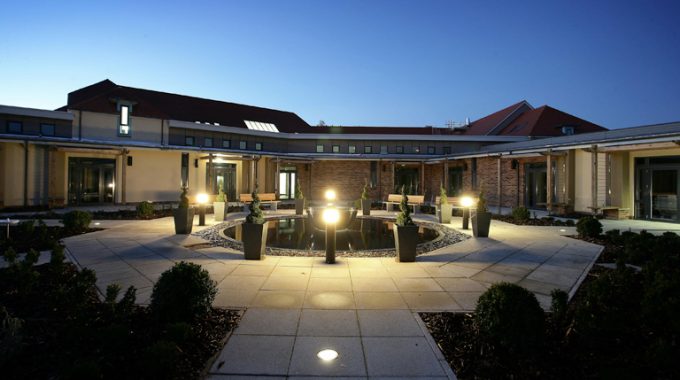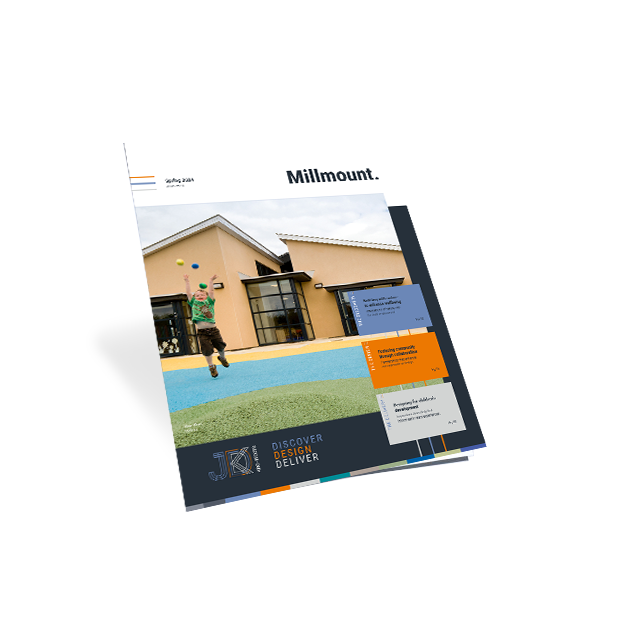
Newcastle Expertise For Marie Curie Hospices
Newcastle-based architects, Jane Darbyshire & David Kendall (JDDK) Ltd are celebrating the completion of three separate hospice projects for Marie Curie Cancer Care.
Whilst two of the projects have been refurbishments of existing hospices at Edinburgh and Penarth, in the West Midlands, the charity have commissioned a brand new £13m facility which is already attracting superb reviews from patients, staff and visitors following completion at the end of 2012. The 24-bedroom hospice has been constructed on a green field site adjacent to the Solihull Bypass by main contractors, Wilmott Dixon
The overall design of the hospice fuses domestic architecture with an open plan layout, drawing visitors and residents into a familiar environment.
JDDK Project Architect, Mura Mullan, explained, “Research has shown the benefits of external views to the health and wellbeing of patients, staff and visitors in such a potentially stressful environment, so the design process began with the idea of small wings, almost like the fingers of a hand, where all the patient rooms and circulation areas had external views over landscaped gardens. In addition to this, windows have been created between the bedrooms and the circulation spaces, the overall aim of which is to prevent feelings of isolation. This approach worked very well with the open plan arrangement of the interior, which the Hospice Manager was very keen on from the outset of the design process.”
“A strong focus of the design was that the elevational treatment should help to put visitors at ease on arrival, and the height of the building is deliberately kept to a human scale with an ambience akin to that of a welcoming house, with low tiled roofs with dormer windows.”
The proposals were developed to enable retention of the vast majority of existing surrounding trees whilst simultaneously creating a new wildlife pond which is covered by CCTV linked to all bedrooms so that all residents can watch the natural habitat; as well as creating a mature landscape setting which the patients can readily engage with, this approach helped the building to achieve a BREEAM Very Good rating.
The in-patient areas are supported by a day hospice, an educational facility, a cafe and kitchen area and administration space, all of which enables Marie Curie to continue to provide a high standard of palliative care to its patients in the West Midlands area.
Running concurrently with the Solihull hospice, JDDK were also working on the £ 1.2m and £2.3m refurbishments of the charity’s Penarth and Edinbugh hospices respectively. Working with the same project management team at both sites, JDDK Project Architect, Stuart Franklin oversaw construction work designed to breathe new life into the 1970’s hospices.
He commented, “Both projects were very similar and fast tracked to minimise disruption to patients. In essence they were about maximising the use of available floor space, improving patient dignity and installing en-suite facilities – prior to the refurbishments, patients had to cross the main corridor of each hospice to access toilet and bath facilities.”
Within the £2.3m budget at Edinburgh, the project extended six of the 15 bedrooms, a mix of single, double and triple rooms, whilst providing balconies to the first floor rooms, screened by brise soleil panels for sunlight control, and provided a new lift shaft to the side of the building. The main entrance area was transformed into a more welcoming two storey foyer space which now forms a central hub to the whole hospice with a link to the Day Services Unit.
Liz Cottier, Hospice Manager, added, “We have now been open for 10 weeks and from the first day when we moved patients from the old hospice to today, all I have heard is wonderful positive comments from patients, visitors and staff. I feel the most positive impression people have on entering the building is the openness and ability no matter where you are within the hospice is to see the outside; we have also been able to create a feeling of not only friendliness but also warmth which helps greatly at times when our patients or their families are very anxious.”
